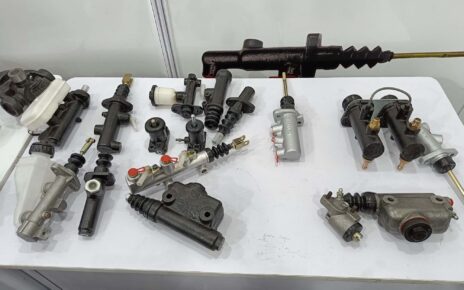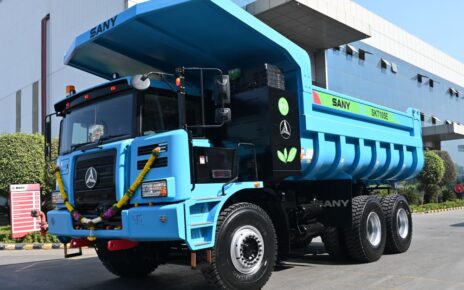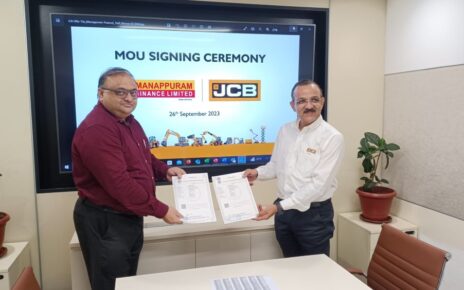
India is no longer just a market for CNH, the global equipment and technology major. It is fast emerging as the company’s hub for design and development, a base for advanced manufacturing, a sourcing engine, and an export springboard – all rolled into one. In a strong signal of this shift, CNH moved its Indian operations out of the APAC cluster in 2024 and placed them directly under the global CEO Mr. Gerrit Marx.
Mr. Marx, who returned to CNH that year with a team-first approach and a bold ambition to push beyond incremental gains, calls this move a strategic reset. He has set clear priorities around simplification, empowerment, and margin-focused performance to accelerate CNH’s transformation. The logic for India’s elevation is simple: scale, purchasing power, and an ecosystem capable of designing, engineering, manufacturing, and exporting world-class machines.
A Breakthrough Mindset on the Ground
CNH (India) has four entities–CNH Industrial India, CASE Construction Equipment, CNH Capital, and the CNH India Technology Centre. The company delivered a strong 2024, producing 51,000 tractors, selling 37,000 domestically and exporting the rest to nearly 80 countries, including 30% to the US and the rest to Europe and MENA. India now contributes around $1 billion in revenue, with 65% from agriculture, 30% from construction equipment, and 5% from financial services.
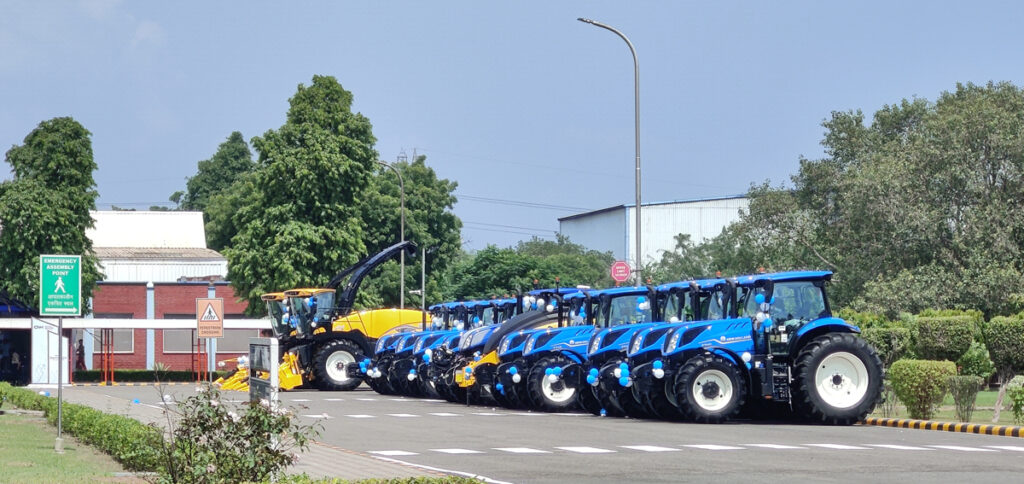
CNH Capital has become a vital enabler, financing dealer wholesale and farmer retail purchases, and now covering about 30% of retail tractor loans–ensuring a smooth flow from factory floor to farm field. “The India team has been outgrowing the industry, gaining share through new products and deeper regional coverage,” Mr. Marx said.

India Now Decides for India
Product calls for India are increasingly made in India by teams who understand local conditions. The India Technology Centre in Gurugram codes software and develops solutions for CNH’s global platforms while creating cost-effective digital tools–fleet management, connectivity, and basic guidance systems–tailored to Indian farms.
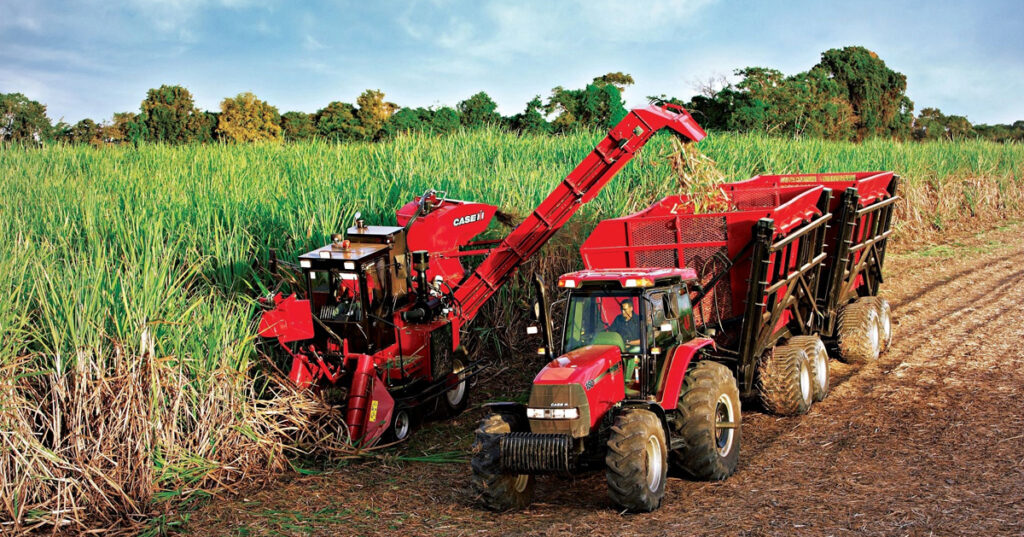
In the Driver’s Seat – Narinder Mittal, President and MD, CNH (India) (left) with Gerrit Marx
Meanwhile, the Greater Noida tractor plant, currently producing 60,000 units, is being scaled up to 70,000. The company is also scouting land–about 60 acres–for a second tractor plant, planned in phases to eventually more than double capacity. Mr. Marx’s message to his teams is clear: invest early, invest for scale, and keep options open. True to his hands-on style, he often drives the company’s machines himself in real-world conditions wherever he goes.
Sharpening Market Focus
Currently holding about 4–5% of India’s vast 900,000-tractor market, CNH (India) is aiming for double-digit share in the next 5–6 years. The game plan: fill white spaces by expanding into under-represented States and broadening its power range. While long known for tractors above 50 hp, it has entered the 35–49 hp segment with new “smart” series tractors designed around Indian work cycles, fuel realities, and financing patterns–shifting from selling global machines in India to building Indian machines for Indian fields.

Global Platform, Local Edge
Mr. Marx has reshaped CNH’s global structure to remove silos, give regions clear P&L ownership, and bring decision-making closer to the frontline through monthly on-site leadership meetings. “We currently manufacture utility light tractors in Brazil, Turkey and India. We’ve now decided to anchor the core of this global production right here at Greater Noida,” he said.
The aim is to build at scale in India, export CKD kits and components to partner plants in Turkey and Latin America, and win share across Southeast Asia and Europe with the next wave of products. Compact tractors are part of this export push, with new models expected to roll out within 18–24 months from the date of finalising the project. These India-led designs will carry localised features tuned to regional needs–giving CNH a strong cost edge as it steps up its global game.
Playing the Long Game
The recent 50% US tariffs have paused shipments from India to America, but CNH has enough stock in the US to ride out the uncertainty. Mr. Marx is strong in his pragmatic approach; he doesn’t want to overhaul a strong supply footprint based on a policy that may change in months. If customers need machines, CNH will protect availability, even if that means short-term margin pressure. India’s role as a production and export hub remains central to CNH’s strategy, he emphasised.
Tech Pathways for India’s Realities
Mr. Marx takes a practical view on future farm tech. He believes full battery-electric tractors in the 100–200 hp range aren’t yet viable for India’s tough duty cycles, patchy charging infrastructure, and narrow weather windows. Instead, CNH sees hybridisation alongside biomethane, renewable gas, and CNG as more realistic in the near term as gas networks grow across northern India.
On autonomy, he said, “fully autonomous machines make sense first on large, contiguous farms in markets like the US, Australia, and Brazil, or in ageing-farmer economies like Japan. India, with its fragmented landholdings, will benefit more immediately from low-cost guidance and fleet tools that help farmers work smarter without waiting for full autonomy.:
Engines, Emissions and Export Credibility
Inside the Greater Noida factory is an engine plant that has been running for nearly 20 years. It has already localised four-cylinder engines to TREM (Tractor Emission Norms) stage-4 and is ready to move to TREM stage-5 when the new norms take effect in April 2026. These engines power tractors from 50 hp to 120 hp, giving India-built machines the muscle to compete globally. As emission regulations converge, the gap between India-spec and global-spec is shrinking fast–playing to CNH’s deep stage-5 experience and boosting India’s export credibility.
Sugarcane: The Hockey-Stick Growth Waiting to Happen
Sugarcane mechanisation is barely 6% nationwide and almost zero in Uttar Pradesh, which produces 40% of India’s sugarcane. As ethanol blending targets rise and farm labour grows scarce, demand for Case IH sugarcane harvesters is picking up, especially in Maharashtra, said Mr. Narinder Mittal, President and Managing Director, CNH (India). Fixing inefficiencies like the current ticketing/purchase system could trigger a hockey-stick surge in adoption. Trials with sugar mills and State agencies are already showing yield gains of 6–7%, he pointed out.
Construction Equipment: A Second Growth Rail
While tractors remain its backbone, CNH (India) is building a second growth engine in CASE Construction Equipment, which already contributes about 30% of its business. A proposed ₹14,000-crore incentive scheme for CE manufacturing has caught its eye, and plans are underway to localise over 50% of components, strengthen the supplier base, and invest deeper in India. If the scheme goes through, it could fast-track CNH’s push to become more competitive and export-ready.
Riding the Tailwinds, Building for 2030
For CY2025, CNH (India) expects industry growth at 4–5%, supported by good monsoons, GST cuts leaving more cash with farmers, and shrinking farm labour pushing mechanisation. CNH is expanding into more States, widening its power range, and localising digital tools to strengthen its presence, Mr. Mittal said.
Finance is a key enabler. CNH Capital supports dealer health through wholesale finance and helps farmers secure retail loans at the farm gate, now with 30% penetration in retail tractor financing.
Looking ahead, CNH is aiming for a significant mid-cycle margins in agriculture by 2030. The plan includes new products, deeper digital integration, and expanding the dealer and after-sales network, while driving operational efficiency through smarter sourcing, sharper production planning, and streamlined manufacturing. Even in a soft global cycle, CNH is investing aggressively in R&D, localisation, new platforms, and capacity–including a planned fourth plant in India. As Mr. Marx summed it up, “We manage daily, we report quarterly, but we architect this group for the next decade.”


